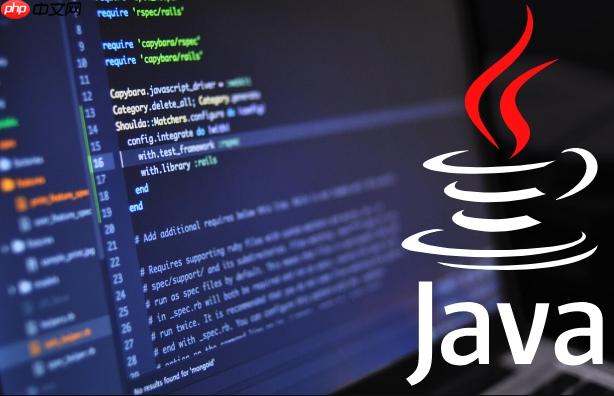1.如何利用反射实现通用对象拷贝?通过获取源对象和目标对象的class结构遍历目标类的setter方法找到源类中匹配字段名的getter方法使用method.invoke()进行赋值public static void copyproperties(object dest object src) throws exception { class> srcclass = src.getclass(); class> destclass = dest.getclass(); for (method destmethod : destclass.getmethods()) { if (destmethod.getname().startswith("set")) { string gettername = "get" + destmethod.getname().substring(3); try { method srcmethod = srcclass.getmethod(gettername); object value = srcmethod.invoke(src); destmethod.invoke(dest value); } catch (nosuchmethodexception ignored) { }}}2.如何通过反射实现插件化加载?步骤包括使用urlclassloader加载外部jar读取jar中的类并判断是否实现了某个接口使用反射创建实例并调用方法file plugindir = new file("plugins/");file[] jars = plugindir.listfiles((dir name) -> name.endswith(".jar"));url[] urls = new url[jars.length];for (int i = 0; i clazz = loader.loadclass(classname); if (myplugininterface.class.isassignablefrom(clazz)) { myplugininterface plugin = (myplugininterface) clazz.getdeclaredconstructor().newinstance(); plugin.execute(); }}3.反射如何辅助实现aop日志记录?定义一个自定义注解如@loggable在需要记录的方法上添加该注解使用aop拦截带该注解的方法在切面中通过反射获取注解内容和方法参数输出日志@aspect@componentpublic class loggingaspect { @before("@annotation(loggable))") public void logbefore(joinpoint joinpoint loggable loggable) { object[] args = joinpoint.getargs(); string methodname = joinpoint.getsignature().getname(); system.out.println("调用方法:" + methodname); for (object arg : args) { system.out.println("参数:" + arg); } }}4.如何优化反射性能?缓存method、field等反射对象避免重复查找使用setaccessible(true)绕过访问控制检查对于大量重复调用的反射操作考虑生成字节码代理类// 示例:缓存method对象private static final map

在Java开发中,反射机制常被视为“高级玩家”的工具。它不仅能动态获取类信息、调用方法和访问字段,还能实现一些非常灵活的设计模式和框架功能。但如果不加节制地使用,也可能带来性能问题或安全风险。掌握其高级应用技巧,能让代码更灵活、扩展性更强。

对象拷贝是日常开发中常见的需求,比如从DTO到Entity的转换。如果每个类都手动写set/get,不仅重复劳动多,还容易出错。这时可以借助反射来实现一个通用的对象拷贝工具类。
关键点:
立即学习“Java免费学习笔记(深入)”;

Method.invoke()进行赋值public static void copyProperties(Object dest, Object src) throws Exception {
Class<?> srcClass = src.getClass();
Class<?> destClass = dest.getClass();
for (Method destMethod : destClass.getMethods()) {
if (destMethod.getName().startsWith("set")) {
String getterName = "get" + destMethod.getName().substring(3);
try {
Method srcMethod = srcClass.getMethod(getterName);
Object value = srcMethod.invoke(src);
destMethod.invoke(dest, value);
} catch (NoSuchMethodException ignored) {
// 没有对应的getter就跳过
}
}
}
}注意:这种方式适合字段名一致的情况。如果字段名不统一,建议结合注解或配置文件做映射。
很多系统需要支持模块热插拔或动态加载外部功能,反射配合类加载器可以实现这一目的。例如从指定目录加载jar包,并根据接口类型创建实例。

操作步骤:
URLClassLoader加载外部jarFile pluginDir = new File("plugins/");
File[] jars = pluginDir.listFiles((dir, name) -> name.endsWith(".jar"));
URL[] urls = new URL[jars.length];
for (int i = 0; i < jars.length; i++) {
urls[i] = jars[i].toURI().toURL();
}
URLClassLoader loader = new URLClassLoader(urls);
for (String className : getClassesFromJar(loader, jarFile)) {
Class<?> clazz = loader.loadClass(className);
if (MyPluginInterface.class.isAssignableFrom(clazz)) {
MyPluginInterface plugin = (MyPluginInterface) clazz.getDeclaredConstructor().newInstance();
plugin.execute();
}
}实际使用时,要处理异常、类冲突、资源释放等问题。Spring Boot的Starter机制本质上也是类似思路的封装。
在日志记录、权限控制等场景中,可以通过自定义注解+反射的方式,在方法执行前后插入逻辑。这其实也是Spring AOP的基本原理之一。
示例流程:
@Loggable
@Aspect
@Component
public class LoggingAspect {
@Before("@annotation(loggable))")
public void logBefore(JoinPoint joinPoint, Loggable loggable) {
Object[] args = joinPoint.getArgs();
String methodName = joinPoint.getSignature().getName();
System.out.println("调用方法:" + methodName);
for (Object arg : args) {
System.out.println("参数:" + arg);
}
}
}如果没有使用Spring,也可以通过代理+反射自己实现简易版。不过要注意性能影响,避免在高频方法中频繁使用。
反射虽然强大,但相比直接调用方法还是慢不少。特别是在高频调用场景下,性能差异会变得明显。
几个实用优化技巧:
Method、Field等反射对象,避免重复查找setAccessible(true)绕过访问控制检查(注意安全限制)// 示例:缓存Method对象
private static final Map<String, Method> METHOD_CACHE = new HashMap<>();
public static void invokeCachedMethod(Object obj, String methodName) throws Exception {
String key = obj.getClass().getName() + "." + methodName;
Method method = METHOD_CACHE.computeIfAbsent(key, k -> {
try {
return obj.getClass().getMethod(methodName);
} catch (NoSuchMethodException e) {
throw new RuntimeException(e);
}
});
method.invoke(obj);
}JVM在JIT编译后会对反射做一定优化,但仍不如原生调用快。所以能不用反射的地方尽量避免,只在确实需要动态行为时使用。
这些反射的实际应用场景,虽然看起来复杂,但在合适的业务场景下却非常实用。掌握好这些技巧,能在设计灵活架构、提升代码复用率方面起到不小作用。当然,反射不是万能的,也不是首选方案,合理使用才是关键。基本上就这些,理解了就可以在项目里灵活运用了。
以上就是Java反射机制在实际开发中的高级应用技巧指南的详细内容,更多请关注php中文网其它相关文章!

每个人都需要一台速度更快、更稳定的 PC。随着时间的推移,垃圾文件、旧注册表数据和不必要的后台进程会占用资源并降低性能。幸运的是,许多工具可以让 Windows 保持平稳运行。

Copyright 2014-2025 https://www.php.cn/ All Rights Reserved | php.cn | 湘ICP备2023035733号